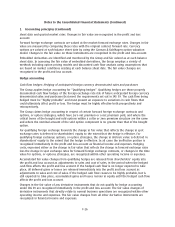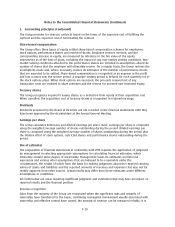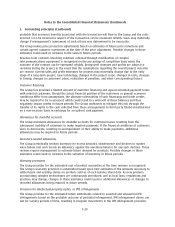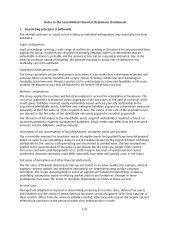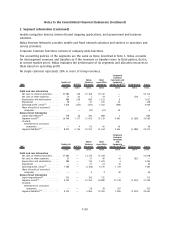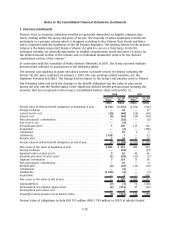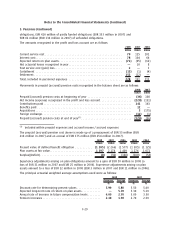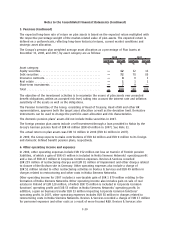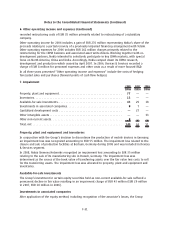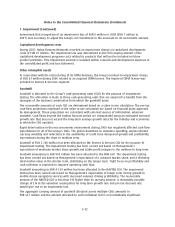Nokia 2008 Annual Report Download - page 166
Download and view the complete annual report
Please find page 166 of the 2008 Nokia annual report below. You can navigate through the pages in the report by either clicking on the pages listed below, or by using the keyword search tool below to find specific information within the annual report.1. Accounting principles (Continued)
Pensions
The determination of pension benefit obligation and expense for defined benefit pension plans is
dependent on the selection of certain assumptions used by actuaries in calculating such amounts.
Those assumptions include, among others, the discount rate, expected longterm rate of return on
plan assets and annual rate of increase in future compensation levels. A portion of plan assets is
invested in equity securities which are subject to equity market volatility. Changes in assumptions
and actuarial conditions may materially affect the pension obligation and future expense.
Sharebased compensation
The Group operates various types of equity settled sharebased compensation schemes for employees.
Fair value of stock options is based on certain assumptions, including, among others, expected
volatility and expected life of the options. Non market vesting conditions attached to performance
shares are included in assumptions about the number of shares that the employee will ultimately
receive relating to projections of net sales and earnings per share. Significant differences in equity
market performance, employee option activity and the Group’s projected and actual net sales and
earnings per share performance, may materially affect future expense.
New accounting pronouncements under IFRS
The Group will adopt the following new and revised standards, amendments and interpretations to
existing standards issued by the IASB that are expected to be relevant to its operations:
Amendment to IFRS 2, Sharebased payment, Group and Treasury Share Transactions, clarifies the
definition of different vesting conditions, treatment of all nonvesting conditions and provides further
guidance on the accounting treatment of cancellations by parties other than the entity.
IAS 1 (Revised), Presentation of financial statements, prompts entities to aggregate information in the
financial statements on the basis of shared characteristics. All nonowner changes in equity (i.e.
comprehensive income) should be presented either in one statement of comprehensive income or in
a separate income statement and statement of comprehensive income.
Amendment to IAS 20, Accounting for government grants and disclosure of government assistance,
requires that the benefit of a belowmarket rate government loan is measured as the difference
between the carrying amount in accordance with IAS 39 and the proceeds received, with the benefit
accounted for in accordance with IAS 20.
Amendment to IAS 23, Borrowing costs, changes the treatment of borrowing costs that are directly
attributable to an acquisition, construction or production of a qualifying asset. These costs will
consequently form part of the cost of that asset. Other borrowing costs are recognized as an expense.
Under the amended IAS 32 Financial Instruments: Presentation, the Group must classify puttable
financial instruments or instruments or components thereof that impose an obligation to deliver to
another party, a prorata share of net assets of the entity only on liquidation, as equity. Previously,
these instruments would have been classified as financial liabilities.
IFRIC 13, Customer Loyalty Programs addresses the accounting surrounding customer loyalty programs
and whether some consideration should be allocated to free goods or services provided by a
company. Consideration should be allocated to award credits based on their fair value, as they are a
separately identifiable component.
IFRIC 16, Hedges of a Net Investment in a Foreign Operation clarifies the accounting treatment in
respect of net investment hedging. This includes the fact that net investment hedging relates to
F22
Notes to the Consolidated Financial Statements (Continued)






